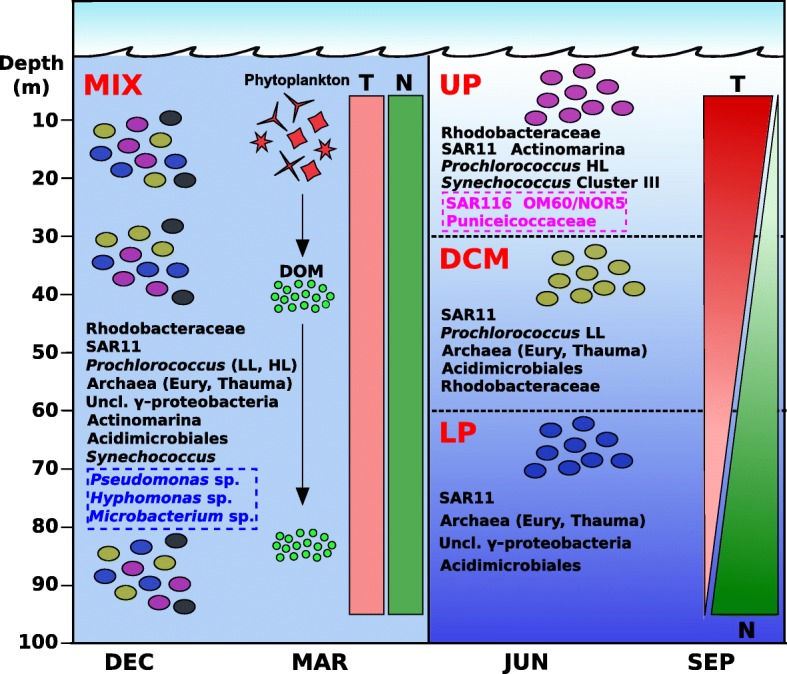Fig. 6.

A graphic summarizing the prokaryotic community dynamics in both stratified and winter seasons. In winter (left panel), physicochemical parameters like temperature (T, in red) and nitrogen (N, in green) do not vary with depth throughout the photic zone, and microorganisms extend over the mixed water column. In summer and part of the autumn (right panel), the stratification of the water column is mainly due to the differences in temperature between surface and deep waters. During this season, three major regions divide the photic zone: upper photic (UP), deep chlorophyll maximum (DCM), and lower photic (LP), and therefore, most of the microorganisms are restricted to one specific region. Persistent microorganisms (in black) are always present, independently of the season. During the mixed season, these microbes span over the water column, while during summer, they inhabit preferentially one or more regions of the photic zone. During winter, some r-strategist microbes (in blue) can grow easily due to the upwelling of nutrients from mesopelagic waters and the release of dissolved organic matter from phytoplankton blooms. Conversely, some K-strategist microbes (in pink) only grow in summer, during the stratification event. LL, low light; HL, high light
